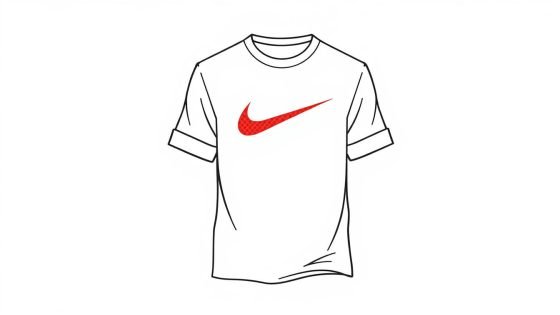Elevating everyday outfits starts with strategic garment combinations. A well-curated base layer acts as your style anchor, adapting to temperature shifts while maintaining polish. Recent data shows 28% search growth for seasonal color palettes, proving transitional dressing drives modern wardrobe choices.
Breathable fabrics like cotton prove essential for comfort during weather changes. These moisture-wicking foundations pair seamlessly with structured pieces like cotton blazers, creating outfits that work from morning commutes to evening events. Style analysts note 21% higher perceived competence in professionals using textured combinations.
Three essentials refine your approach:
- Fit First: Start with trim base layers (1-2 finger room at shoulder seams)
- Color Contrast: Pair neutral tees with bold outerwear for instant visual depth
- Fabric Care: Wash cotton in cold water to prevent shrinkage over 40+ wears
Seasoned dressers achieve this balance through intentional fabric mixes rather than bulk. The right combinations create adaptable outfits that maintain sharpness through changing climates and occasions.
Embracing the Art of Layering for Transitional Dressing
Weather-ready ensembles start with strategic texture combinations. Pairing complementary materials creates adaptable outfits that maintain structure without sacrificing comfort. This approach works across seasons, particularly when temperatures fluctuate unpredictably.
Understanding Fabric and Texture Dynamics
A lightweight base sets the foundation. Breathable cotton tees or moisture-wicking vests sit comfortably against the skin, allowing airflow during summer heat. Heavier overshirts or summer formal dress shirts add dimension when temperatures dip.
Contrasting textures elevate simple combinations. Try smooth linen against rugged denim or soft flannel over a fitted tee. This interplay creates visual interest while enhancing your silhouette through balanced proportions.
Balancing Light and Heavy Layers for Versatility
Start with thin fabrics closest to the body, gradually building outward. A tailored jacket in breathable wool works over cotton layers without bulk. Denim pieces provide structured warmth that adapts to morning chills or evening breezes.
Each component should function independently. Your overshirt must pair with weekend jeans as easily as it layers over workday essentials. This flexibility ensures every garment earns its place in your rotation.
Mastering the mens layered look tshirt: Core Techniques and Tips
Building weather-ready outfits starts with foundational pieces that adapt to temperature shifts. A curated selection of basics allows seamless transitions between casual and polished looks while maintaining comfort. Recent surveys show 63% of style-conscious individuals prioritize versatile clothing that layers effectively without bulk.
Building a Versatile Base with Essential Wardrobe Staples
Start with crisp white crewnecks or oxford shirts—these basics pair effortlessly with jeans or tailored trousers. Neutrals tees work as blank canvases, while collared polos add structure under jackets. Three essentials form a functional base:
- Lightweight cotton vests (slim fit, moisture-wicking)
- Oxford button-downs (mid-weight fabric, non-iron)
- Neutral crewnecks (crew neckline, ribbed trim)
Mixing Patterns, Colours, and Proportions
Use the 70-20-10 rule: 70% base colour, 20% complementary shade, 10% accent. Pair striped shirts with solid jackets or textured sweaters. This table simplifies color coordination:
| Base Color | Accent Palette | Texture Pairing |
|---|---|---|
| Navy | Rust, Cream | Herringbone wool |
| Charcoal | Burgundy, Olive | Brushed cotton |
| White | Indigo, Camel | Linen-cotton blend |
Strategies to Avoid Bulkiness and Enhance Silhouette
Limit visible layers to three maximum. Choose thin knits over thick sweaters, and tuck base shirts for cleaner lines. Pair slim jeans with unstructured blazers—the contrast creates definition without weight. Always perform the “shoulder pinch test”: if fabric bunches when grasping your collar, opt for a leaner cut.
Creative Styling Strategies for Refining Your Transitional Wardrobe
Transformative wardrobe solutions emerge when pairing unexpected textures with intentional proportions. Start by reimagining classic pieces through modern combinations—a crisp linen shirt beneath a rugged chore coat, or lightweight flannel shirts over moisture-wicking base layers. This approach bridges seasonal gaps while maintaining polished versatility.
Layering Ideas for Casual, Smart, and Seasonal Looks
For weekend outings, pair slim-fit base layers with unlined outerwear. A waffle-knit top under a bomber jacket creates warmth without bulk. Add depth by knotting a flannel shirt at the waist—this casual styling trick introduces color contrast while keeping proportions balanced.
Smart ensembles thrive on structured pairings. Layer a tailored vest over a dress shirt, then finish with a wool-blend topcoat. The table below simplifies elevated combinations:
| Occasion | Base Layer | Layering Piece | Outerwear |
|---|---|---|---|
| Office Casual | Merino crewneck | Linen overshirt | Unstructured blazer |
| Weekend Brunch | Cotton tee | Flannel shirt | Field jacket |
| Evening Event | Silk-blend top | Knit waistcoat | Peacoat |
Seasonal shifts demand fabric awareness. Summer styling benefits from breathable linen outerwear over quick-dry base layers. In cooler months, rotate thicker flannel shirts as mid-layers beneath water-resistant shells. Always maintain the three-layer maximum rule—this prevents bulk while allowing quick adjustments.
Refine proportions by matching slim base layers with slightly roomier outerwear. For example, pair a fitted thermal top with a box-cut chore jacket. This contrast emphasizes shoulder structure while allowing airflow. Discover more about the art of layering through intentional color gradients—transition from dark base layers to medium-toned mid-layers, finishing with light outerwear for visual lift.
Conclusion
Mastering transitional style requires balancing practicality with creative expression. The art of layering thrives when fabric knowledge meets intentional pairing—choose breathable bases that complement structured outerwear. Three principles prevent looking bulky: precise fits, graduated textures, and scaled proportions.
Every layer serves a purpose. Base garments regulate temperature, mid-layers add dimension, and shells protect against elements. Make sure each piece aligns with your climate needs—lighter linen for humid days, wool blends for cold weather shifts.
Experimentation refines your approach. Try unexpected layering pieces like quilted vests under unstructured blazers or lightweight turtlenecks beneath chore coats. These combinations adapt seamlessly from autumn breezes to winter chills while maintaining polished aesthetics.
Clothes should enhance, not overwhelm. Prioritize tailored cuts that move with your frame, avoiding excess fabric pooling at joints. When shopping, seek versatile items that transition across occasions—a merino crewneck works equally well under office wear or weekend jackets.
True style emerges when garments function harmoniously. Invest in quality staples that withstand seasonal changes while expressing personal flair through thoughtful combinations. The right wardrobe foundations elevate daily dressing from routine to refined craft.





